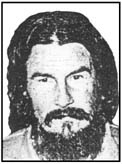From chapter two of Releasing the Bonds: Empowering People to Think for Themselves*
*© 2000 by Steven Hassan; published by Freedom of Mind Press, Somerville MA
Destructive mind control can be understood in terms of four basic components, which form the acronym BITE:
I. Behavior ControlIt is important to understand that destructive mind control can be determined when the overall effect of these four components promotes dependency and obedience to some leader or cause. It is not necessary for every single item on the list to be present. Mind controlled cult members can live in their own apartments, have nine-to-five jobs, be married with children, and still be unable to think for themselves and act independently.
II. Information Control
III. Thought Control
IV. Emotional Control
I. Behavior Control
1) Regulation of individual's physical reality
a) Where, how and with whom the member lives and associates with
b) What clothes, colors, hairstyles the person wears
c) What food the person eats, drinks, adopts, and rejects
d) How much sleep the person is able to have
e) Financial dependence
f) Little or no time spent on leisure, entertainment, vacations
2) Major time commitment required for indoctrination sessions and group rituals
3) Need to ask permission for major decisions
4) Need to report thoughts, feelings and activities to superiors
5) Rewards and punishments (behavior modification techniques- positive and negative).
6) Individualism discouraged; group think prevails
7) Rigid rules and regulations
8) Need for obedience and dependency
II. Information Control
1) Use of deception
a) Deliberately holding back information
b) Distorting information to make it acceptable
c) Outright lying
2) Access to non-cult sources of information minimized or discouraged
a) Books, articles, newspapers, magazines, TV, radio
b) Critical information
c) Former members
d) Keep members so busy they don't have time to think
3) Compartmentalization of information; Outsider vs. Insider doctrines
a) Information is not freely accessible
b) Information varies at different levels and missions within pyramid
c) Leadership decides who "needs to know" what
4) Spying on other members is encouraged
a) Pairing up with "buddy" system to monitor and control
b) Reporting deviant thoughts, feelings, and actions to leadership
5) Extensive use of cult generated information and propaganda
a) Newsletters, magazines, journals, audio tapes, videotapes, etc.
b) Misquotations, statements taken out of context from non-cult sources
6) Unethical use of confession
a) Information about "sins" used to abolish identity boundaries
b) Past "sins" used to manipulate and control; no forgiveness or absolution
III. Thought Control
1) Need to internalize the group's doctrine as "Truth"
a) Map = Reality
b) Black and White thinking
c) Good vs. evild
d) Us vs. them (inside vs. outside)
2) Adopt "loaded" language (characterized by "thought-terminating clichés"). Words are the tools we use to think with. These "special" words constrict rather than expand understanding. They function to reduce complexities of experience into trite, platitudinous "buzz words".
3) Only "good" and "proper" thoughts are encouraged.
4) Thought-stopping techniques (to shut down "reality testing" by stopping "negative" thoughts and allowing only "good" thoughts); rejection of rational analysis, critical thinking, constructive criticism.
a) Denial, rationalization, justification, wishful thinking
b) Chanting
c) Meditating
d) Praying
e) Speaking in "tongues"
f) Singing or humming
5) No critical questions about leader, doctrine, or policy seen as legitimate
6) No alternative belief systems viewed as legitimate, good, or useful
IV. Emotional Control
1) Manipulate and narrow the range of a person's feelings.
2) Make the person feel like if there are ever any problems it is always their fault, never the leader's or the group's.
3) Excessive use of guilt
a) Identity guilt
i) Who you are (not living up to your potential)
ii) Your family
iii) Your past
iv) Your affiliations
v) Your thoughts, feelings, actions
b) Social guilt
c) Historical guilt
4) Excessive use of fear
a) Fear of thinking independently
b) Fear of the "outside" world
c) Fear of enemies
d) Fear of losing one's "salvation"
e) Fear of leaving the group or being shunned by group
f) Fear of disapproval
5) Extremes of emotional highs and lows.
6) Ritual and often public confession of "sins".
7) Phobia indoctrination : programming of irrational fears of ever leaving the group or even questioning the leader's authority. The person under mind control cannot visualize a positive, fulfilled future without being in the group.
a) No happiness or fulfillment "outside"of the group
b) Terrible consequences will take place if you leave: "hell"; "demon possession"; "incurable diseases"; "accidents"; "suicide"; "insanity"; "10,000 reincarnations"; etc.
c) Shunning of leave takers. Fear of being rejected by friends, peers, and family.
d) Never a legitimate reason to leave. From the group's perspective, people who leave are: "weak;" "undisciplined;" "unspiritual;" "worldly;" "brainwashed by family, counselors;" seduced by money, sex, rock and roll.





